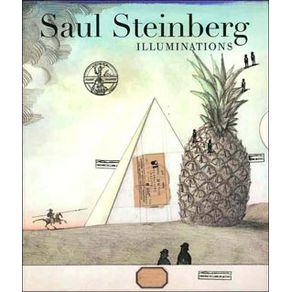Saul Steinberg (1914-99) described himself as a "writer who draws," thus inspiring curator Smith to characterize Steinberg's brilliantly satiric drawings as "illuminations," thus linking his work to illuminated manuscripts and, given Steinberg's love of literature, to a particular favorite, Arthur Rimbaud's Illuminations. Smith also explores Steinberg's mission to illuminate the overlooked and the absurd. In the biographical sections of his beautifully crafted critique, Smith affectingly recounts Steinberg's life as a Jew in anti-Semitic Romania and an architecture student in Fascist Milan whose distinctive cartoons served as his ticket out of Nazi Europe and onto the pages of the New Yorker. Both Smith and renowned poet Charles Simic associate Steinberg's fascination with documents with his harrowing refugee experiences, while Simic, a fellow immigrant from the Balkans and a friend of Steinberg's, offers striking insights into the artist's comic sensibility. Both commentators reflecton the great change in Steinberg's work after 1960, as his images turned hallucinatory and nightmarish, his protest against tyranny more intense. As instantly recognizable as Steinberg's kinetic, punning, and slyly skewering art is, there hasn't beena comprehensive Steinberg book in years, making this outstanding volume invaluable in its reclamation of Steinberg's agile, philosophic, and category-defying art.



